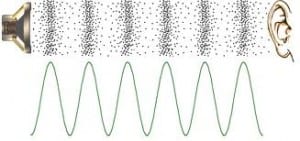 The pre-arrival lens is a neurological phenomenon that can both help and hinder situational awareness. The “lens” is your mental view of the incident you are responding to, developed prior to your arrival, and based on the triangulation of three primary data sources – dispatch information (shared via radio), past experience and imagination. This article explores how the pre-arrival lens is developed and how it can help or hinder situational awareness.
The pre-arrival lens is a neurological phenomenon that can both help and hinder situational awareness. The “lens” is your mental view of the incident you are responding to, developed prior to your arrival, and based on the triangulation of three primary data sources – dispatch information (shared via radio), past experience and imagination. This article explores how the pre-arrival lens is developed and how it can help or hinder situational awareness.
Pre-arrival lens
As you are dispatched to and are responding to an emergency call, you are gathering information provided over the radio (or mobile data computer) by the dispatcher, to form your understanding, and your expectations about what you will see when you arrive at the scene. This imagery is your pre-arrival lens.
Information Inputs
 The beginning of the formation of the pre-arrival lens occurs when you are dispatched and the call information is shared over a radio or a mobile data computer. If the information comes to you audibly, the sound waves come into your ears and are turned into electrical impulses that are then transported to the audible processing centers of your brain (you have two, one for each ear).
The beginning of the formation of the pre-arrival lens occurs when you are dispatched and the call information is shared over a radio or a mobile data computer. If the information comes to you audibly, the sound waves come into your ears and are turned into electrical impulses that are then transported to the audible processing centers of your brain (you have two, one for each ear).
 If the information comes to you visually (e.g., reading an MDT) the information is coming into your eyes via words on a screen. The interesting thing about words are the letters form shapes. Those shapes are then turned into electrical impulses and are transported to the visual processing center in your brain (you only have one visual processor, but it is the largest of all the sensory processors).
If the information comes to you visually (e.g., reading an MDT) the information is coming into your eyes via words on a screen. The interesting thing about words are the letters form shapes. Those shapes are then turned into electrical impulses and are transported to the visual processing center in your brain (you only have one visual processor, but it is the largest of all the sensory processors).
Sensory Integration
 At some point, the information that is gathered from all the senses must come together and be compared and contrasted to form our understanding of what is going on. This melding together of sensory information is known as sensory integration. These independent sensory inputs are then bound together to form one coherent picture of the world. In neuroscience, we don’t really know exactly how it is the brain can consolidate so many pieces of potentially conflicting pieces of information into one coherent… or seemingly coherent… understanding of what’s going on, but it does – most of the time with remarkable accuracy. But sometimes, the consolidation can go awry. When it does, we are said to be suffering from a flawed perception of reality.
At some point, the information that is gathered from all the senses must come together and be compared and contrasted to form our understanding of what is going on. This melding together of sensory information is known as sensory integration. These independent sensory inputs are then bound together to form one coherent picture of the world. In neuroscience, we don’t really know exactly how it is the brain can consolidate so many pieces of potentially conflicting pieces of information into one coherent… or seemingly coherent… understanding of what’s going on, but it does – most of the time with remarkable accuracy. But sometimes, the consolidation can go awry. When it does, we are said to be suffering from a flawed perception of reality.
Past Experiences
 Complicating the process of understanding our world, your brain also takes the understanding of what is going on and compares it to previous experiences. This rapid comparison can be very beneficial, even lifesaving, and you can be thankful that you don’t have to awake every day and have to learn your world all over again. You have the gift of long-term memory to help overcome that obstacle.
Complicating the process of understanding our world, your brain also takes the understanding of what is going on and compares it to previous experiences. This rapid comparison can be very beneficial, even lifesaving, and you can be thankful that you don’t have to awake every day and have to learn your world all over again. You have the gift of long-term memory to help overcome that obstacle.
The prompts (I often refer to the prompts and clues and cues) that are formed in the current moment are then compared to experiences stored in long-term memory. If there are no previous experiences, the situation would be known as a “novel” situation because it’s not one that has ever been experienced before. And thus, there is no existing knowledge stored about how to deal with the issue.
Past experiences combine with current clues and cues and strengthens your understanding of what is happening.
Imagination
The final component that helps form pre-arrival lens is imagination. Soberingly, your entire pre-arrival lens is nothing more than a figment of your imagination. As you gather the clues and cues (information), you are forming a mental “picture” of the incident scene. The picture may be accurate, or it may be outrageously inaccurate. It’s when it’s inaccurate that situational awareness goes awry.
The Mind’s Eye
 The picture you form in your mind is like the pieces of a puzzle being assembled to form understanding. Think of the location where this happens as the epicenter of your conscious awareness (and in case you’re wondering where exactly that is, the truth of the matter is we don’t know and it is a hot topic in neuro research). The location is sometimes referred to as your “mind’s eye” – the location where sensory input, past experiences and imagination all piece together to form your… awareness.
The picture you form in your mind is like the pieces of a puzzle being assembled to form understanding. Think of the location where this happens as the epicenter of your conscious awareness (and in case you’re wondering where exactly that is, the truth of the matter is we don’t know and it is a hot topic in neuro research). The location is sometimes referred to as your “mind’s eye” – the location where sensory input, past experiences and imagination all piece together to form your… awareness.
Problems with the Pre-Arrival Lens
Keep in mind the pre-arrival lens is entirely fabricated – it’s imaginary. Yet, because of your brain’s powerful ability to paint such vivid imagery, coupled with your level of confidence, challenged by the stubbornness of your brain to believe (and not let go of) what gets painted on to the mental sketch pad, complicated by dozens of biases, the pre-arrival lens can present some formidable challenges.
Dr. Gasaway’s Advice
 You are always going to form some understanding of what you are responding to based on information provided to you over the radio or MDT. The formation of pre-arrival lens is, quite literally, unavoidable. The opportunity to improve your situational awareness comes once you arrive on the scene.
You are always going to form some understanding of what you are responding to based on information provided to you over the radio or MDT. The formation of pre-arrival lens is, quite literally, unavoidable. The opportunity to improve your situational awareness comes once you arrive on the scene.
It takes a conscious effort to override the beliefs and assumptions formed prior to arrival and to take a fresh look at the clues and cues that are ACTUALLY present, notwithstanding your brain’s propensity to NOT want to erase what is already there. You can do this by looking at the incident with a skeptical eye and engaging in self-talk. For example, you might say to yourself: I expected to see fire coming from the second floor window in the A-side of the structure. Do I? What else do I see that confirms my assumptions? What do I see that refutes (or contradicts) my assumptions?
Do not dismiss the contradictions as coincidence. This is easy to do but the seemingly coincidental clues and cues may not be coincidence at all. Rather, they may be what is termed “soft clues” (the less-than-obvious clues). These clues are are subtle hints that something more – or something different – may be going on. When soft clues are present, don’t dismiss them. Rather, ask yourself: What does that mean? Why am I seeing that? If it seems out of the ordinary, seek further explanations.
Action Items
 1. Discuss a time when your pre-arrival lens caused a problem with your situational awareness. Discuss how it impacted your understanding and, perhaps, your decision making.
1. Discuss a time when your pre-arrival lens caused a problem with your situational awareness. Discuss how it impacted your understanding and, perhaps, your decision making.
2. Discuss strategies you’ve employed for overcoming the pre-arrival lens trap. Share some ideas to help your co-workers.
3. Discuss strategies you could use to help ensure the information being shared from dispatch is as accurate as possible. Include in this discussion the information you’d want to know from dispatch prior to arrival.
_____________________________________________________

If you are interested in taking your understanding of situational awareness and high-risk decision making to a higher level, check out the Situational Awareness Matters Online Academy.
CLICK HERE for details, enrollment options and pricing.
__________________________________
Share your comments on this article in the “Leave a Reply” box below. If you want to send me incident pictures, videos or have an idea you’d like me to research and write about, contact me. I really enjoy getting feedback and supportive messages from fellow first responders. It gives me the energy to work harder for you.
Thanks,

Email: Support@RichGasaway.com
Phone: 612-548-4424
SAMatters Online Academy
Facebook Fan Page: www.facebook.com/SAMatters
Twitter: @SAMatters
LinkedIn: Rich Gasaway
Instagram: sa_matters
YouTube: SAMattersTV
iTunes: SAMatters Radio
iHeart Radio: SAMatters Radio
